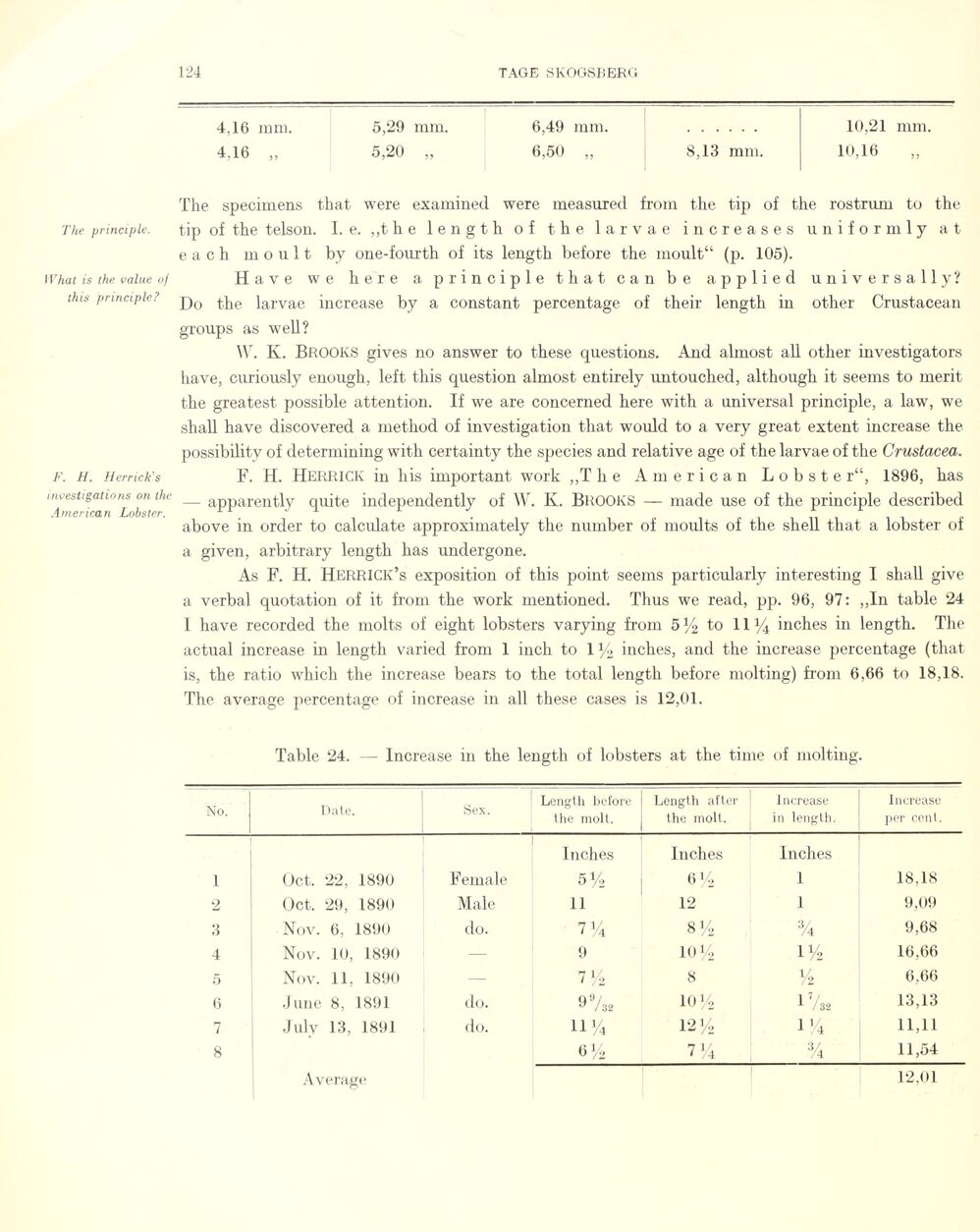
Full resolution (JPEG) - On this page / på denna sida - Sidor ...

<< prev. page << föreg. sida << >> nästa sida >> next page >>
Below is the raw OCR text
from the above scanned image.
Do you see an error? Proofread the page now!
Här nedan syns maskintolkade texten från faksimilbilden ovan.
Ser du något fel? Korrekturläs sidan nu!
This page has never been proofread. / Denna sida har aldrig korrekturlästs.
The principle.
What is the value o]
this principle?
F. H. Herrick’s
investigations on the
American Lobster.
4.16 mm. 5,29 mm. 6,49 mm. ........ 10,21 mm.
4.16 „ 5,20 „ 6,50 „ 8,13 mm. 10,16
The specimens that were examinée! were measured from the tip of the rostrum to the
tip of the telson. I.e. „the length of the larvae increases uniform ly at
e a c h moult by one-fourth of its length before the moult“ (p. 105).
Have we he re a principle that can be applied universally?
Do the larvae increase by a constant percentage of their length in other Crustacean
groups as well?
W. K. BROOKS gives no ans wer to these questions. And almost all other investigators
have, curiously enough, left this question almost entirely untouched, although it seems to merit
the greatest possible attention. If we are concerned here with a universal principle, a law, we
shall have discovered a method of investigation that would to a very great extent increase the
possibility of determining with certainty the species and relative age of the larvae of the Crustacea.
F. H. HERRICK in his important work „T h e American L o b s t e r“, 1896, bas
- apparently quite independently of W. K. BROOKS — made use of the principle described
above in order to calculate approximately the number of moults of the shell that a lobster of
a given, arbitrary length has undergone.
As F. H. Herrick’s exposition of this point seems particularly interesting I shall give
a verbal quotation of it from the work mentioned. Thus we read, pp. 96, 97: ,,In table 24
I have recorded the molts of eight lobsters varying from 5% to 111/} inches in length. The
actual increase in length varied from 1 inch to 1 y2 inches, and the increase percentage (that
is, the ratio which the increase bears to the total length before molting) from 6,66 to 18,18.
The average percentage of increase in ail these cases is 12,01.
Table 24. — Increase in the length of lobsters at the time of molting.
No. Date. Sex. Length before the molt. Length after the molt. Increase in length. Increase per cent.
Inches Inches Inches
1 Oct. 22, 1890 Female 5 y o 6V2 1 18,18
2 Oct. 29, 1890 Male 11 12 1 9,09
3 Nov. 6, 1890 do. 7Î4 8% 3/4 9,68
4 Nov. 10, 1890 — 9 io y2 iy2 16,66
5 Nov. 11, 1890 — lYz 8 Yz 6,66
6 June 8, 1891 do. 99/s2 ioy2 i’/s. 13,13
7 July 13, 1891 do. ny4 i2 yo iy4 11,11
8 6 Vu T’À 3/4 11,54
Average 12,01
<< prev. page << föreg. sida << >> nästa sida >> next page >>